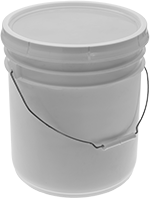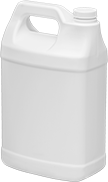About Grease
More
About Oil
More
About Lubricants
More
Chain Oil

Thin enough to penetrate inside chain pins and links, yet tacky so it stays in place, use this oil to lubricate chain and roller chain.
Viscosity is the thickness of an oil. The higher the grade, the thicker the oil, and the less it flows.
Vegetable oil is slicker than mineral oil, but it breaks down faster. It’s considered an environmentally acceptable lubricant by the EPA because it breaks down quickly in water, limiting the effect on the environment. It’s designed for use with chainsaws.
Viscosity Grade | Container | |||||||
|---|---|---|---|---|---|---|---|---|
| SAE | Size | Type | Temp. Range, °F | Color | With Detergent | Specifications Met | Each | |
Vegetable Base Oil | ||||||||
| 15W-50 | 32 fl. oz. | Bottle | -20° to 200° | Amber | No | Environmentally Acceptable Lubricant (EAL) per VGP | 00000000 | 000000 |
Biodegradable Hydraulic Oil

Protect equipment while having a limited impact on the environment. This oil is considered an Environmentally Acceptable Lubricant (EAL) by the EPA’s Vessel General Permit. To qualify as an EAL, a lubricant must be able to quickly break down in water. Wear-resistant properties keep hydraulic pumps and equipment working, even in high-pressure systems.
Viscosity is the thickness of an oil. The higher the grade, the thicker the oil, and the less it flows.
Viscosity Grade | Container | |||||||||
|---|---|---|---|---|---|---|---|---|---|---|
| ISO | AGMA | SAE | Size, gal. | Type | Temp. Range, °F | Color | With Detergent | Specifications Met | Each | |
Vegetable Base Oil | ||||||||||
| 46 | 1 | 20 | 5 | Pail | -25° to 460° | Yellow | No | Environmentally Acceptable Lubricant (EAL) per VGP | 0000000 | 0000000 |
| 68 | 2 | 20 | 5 | Pail | -25° to 460° | Yellow | No | Environmentally Acceptable Lubricant (EAL) per VGP | 0000000 | 000000 |
Biodegradable Penetrating Lubricants


Protect equipment while limiting environmental impact. These lubricants are considered Environmentally Acceptable Lubricants (EAL) by the EPA’s Vessel General Permit. To qualify as an EAL, a lubricant must be able to quickly break down in water. Use them to cut through dirt, grease, and rust, loosen stuck fasteners, and protect tools and equipment.
Biodegradable Food Industry Penetrating Lubricants

Protect food-processing and preparation equipment while limiting environmental impact. These thin, multipurpose lubricants are NSF registered H1 for incidental food contact and are considered Environmentally Acceptable Lubricants (EAL) by the EPA’s Vessel General Permit. To qualify as an EAL, a lubricant must be able to quickly break down in water. Use them to cut through dirt, grease, and rust, loosen stuck fasteners, and protect tools and equipment.
Biodegradable Food Industry Penetrating Lubricants for Chain

Protect chain and other moving metal parts found in food-processing and preparation equipment while limiting environmental impact. These lubricants are NSF registered H1 for incidental food contact and are considered Environmentally Acceptable Lubricants (EAL) by the EPA’s Vessel General Permit. To qualify as an EAL, a lubricant must be able to quickly break down in water. Use them to cut through dirt, grease, and rust, and to protect metal surfaces.
Biodegradable Moisture-Resistant Grease
Protect equipment while having a limited impact on the environment. This grease resists moisture but is still considered an Environmentally Acceptable Lubricant (EAL) by the EPA’s Vessel General Permit. To qualify as an EAL, a lubricant must be able to quickly break down in water.
NLGI viscosity grade is a rating of a grease's consistency. NLGI 2 is about the consistency of peanut butter.
Grease lubricates most efficiently within the listed temperature range. Melting temperature is the point at which grease will fail and run out of equipment, leaving it to run dry.
Container | |||||||||
|---|---|---|---|---|---|---|---|---|---|
| NLGI Viscosity Grade | Base Oil | Size, fl. oz. | Type | Temp. Range, °F | Melting Temp., °F | Color | Specifications Met | Each | |
Lithium Thickener | |||||||||
| 2 | Vegetable | 14 | Grease Gun Cartridge | 10° to 275° | 385° F | Amber | Environmentally Acceptable Lubricant (EAL) per VGP | 0000000 | 000000 |

























